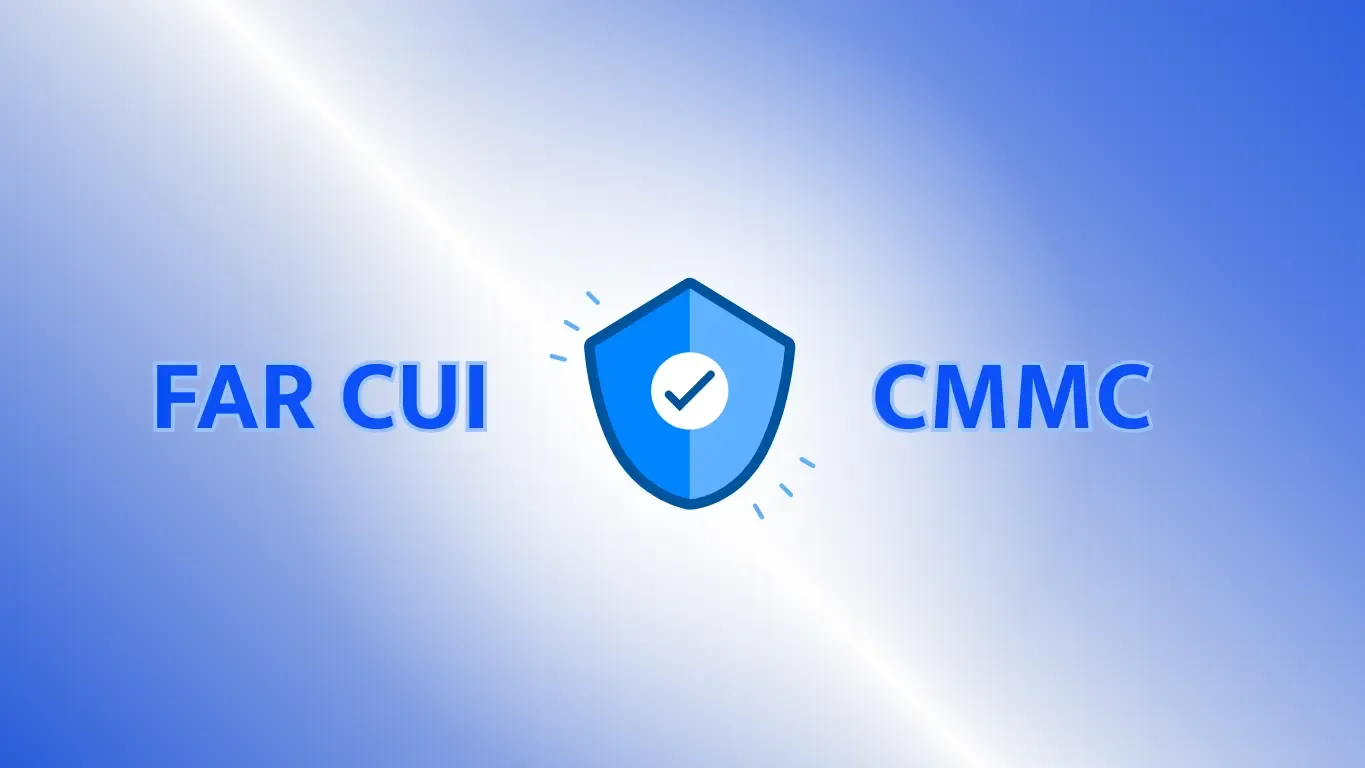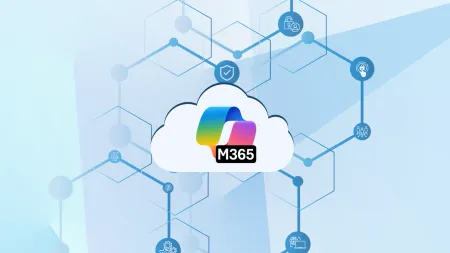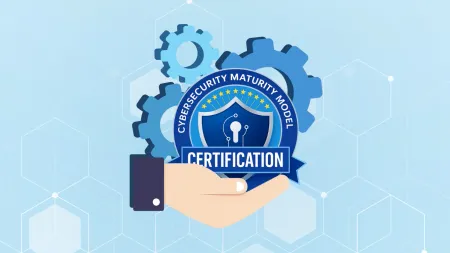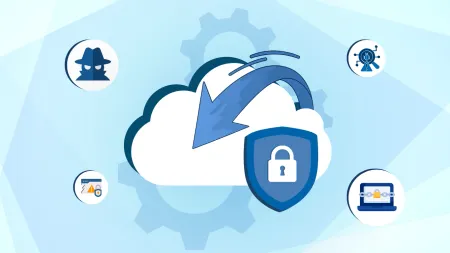FAR CUI vs CMMC Understanding the Differences and Overlaps
FAR CUI and CMMC both focus on protecting sensitive federal data, but they have key differences. Learn how they work together and whether FAR CUI compliance aligns with CMMC.

FAR CUI vs CMMC: Understanding the Differences and Overlaps
The United States Government and its contractors are frequent targets of cyberattacks because of the sensitive information they work with. That includes Controlled Unclassified Information (CUI), which, while not classified, still plays an important role in national security. Contractors have a responsibility to protect that data, especially those working with the Department of Defense (DoD), who are required to follow strict cybersecurity regulations.
Two key frameworks aimed at protecting CUI are the Cybersecurity Maturity Model Certification (CMMC) and the soon-to-be-finalized Federal Acquisition Regulation for Controlled Unclassified Information (FAR CUI). FAR CUI is still waiting for final approval from the Office of Information and Regulatory Affairs (OIRA), but once in effect, it will extend NIST SP 800-171 compliance requirements beyond the DoD to all executive branch agencies.
Both frameworks require contractors to implement the same set of NIST SP 800-171 security controls to protect CUI on non-government systems. So, it’s understandable if you’re wondering how FAR CUI and CMMC differ—and whether meeting one means you’re covered for the other.
Keep reading to get a clear breakdown of what sets them apart, where they overlap, and what your organization needs to do to stay compliant.
Cybersecurity Regulations for Defense Contractors
For DoD contractors, achieving compliance with the Defense Department’s complex cybersecurity requirements can feel like an overwhelming prospect, as you may be confused by what all of the different regulatory frameworks do and how they work together. The most important regulations DoD contractors need to be familiar with are NIST SP 800-171, NIST SP 800-171A, DFARS, and CMMC. Here’s a simple breakdown of what each of these regulations does and how they work together:
-
NIST SP 800-171: This is a set of cybersecurity rules that government contractors who handle Controlled Unclassified Information must follow to protect government info. NIST SP 800-171 outlines 110 security controls across 14 control families. This regulation is meant to protect the confidentiality of CUI stored, processed, and transmitted on non-federal information systems.
-
DFARS: DFARS is a set of regulations that requires defense contractors to follow and implement the controls outlined in NIST SP 800-171 if they want to obtain/maintain a DoD contract.
-
NIST 800-171A: Once a defense contractor implements all 110 security controls outlined in NIST SP 800-171, they must then assess whether these controls have been implemented properly; this is where NIST SP 800-171A comes into play. NIST 800-171A breaks down each of the 110 practices into multiple assessment objectives (320 in total) that provide detailed criteria organizations can use to verify that all of the security controls have been properly implemented.
-
CMMC: Finally, CMMC is a certification program that the Department of Defense uses to ensure that contractors have properly implemented the security controls outlined in NIST SP 800-171. Achieving CMMC certification requires a third-party audit to make sure that contractors are following proper cybersecurity protocols.
What is FAR CUI?
FAR CUI (Federal Acquisition Regulation for Controlled Unclassified Information) is a rule created by the Department of Defense, General Services Administration, and NASA, originally published as a proposed rule under FAR Case 2021-017 in 2023. It aims to standardize security requirements for all government contractors handling Controlled Unclassified Information (CUI) by requiring implementation of NIST SP 800-171, aligning civilian agency requirements with the DoD’s existing DFARS 252.204.7012. While this rule was first proposed in 2023, it was stuck in limbo for several years as multiple government agencies tried to agree on its scope and implementation process. However, it is expected to finally go into effect in Q4 2025 or Q1 2026 following a public comment period that began in March 2025.
FAR CUI applies to all contractors and subcontractors that process, store, or transmit CUI for any executive branch agency—not just the DoD. While it sets cybersecurity standards and incident reporting requirements, it currently relies on self-assessment and does not require third-party certification.
What is CMMC?
The Cybersecurity Maturity Model Certification (CMMC) is a Department of Defense (DoD) specific framework that ensures contractors and subcontractors within the Defense Industrial Base (DIB) are properly safeguarding Controlled Unclassified Information (CUI). It establishes cybersecurity requirements to protect sensitive data shared by the DoD. CMMC uses a three-tiered certification model requiring that organizations meet different levels based on the type and sensitivity of the information they handle.
CMMC maturity level 2 requires organizations to be aligned with all 110 security controls from NIST SP 800-171, while level 3 requires these controls to be implemented as well as an additional 24 controls from NIST SP 800-172. Except for level 1 (which allows organizations to perform annual self-assessments), CMMC requires organizations to undergo third-party assessments (C3PAO audits) every three years in order to maintain compliance. CMMC then plays a critical role in protecting the defense supply chain from cyber attacks by ensuring that defense contractors have adequate measures in place to protect the CUI they handle on behalf of the Department of Defense.
Differences and Similarities Between FAR CUI and CMMC
While both FAR CUI and CMMC play critical roles by helping the federal government ensure its contractors are properly securing sensitive data, these frameworks differ significantly in their applicability, requirements, and assessment processes. To help you better understand these two frameworks, including how they work and to whom they apply, take a look below at the similarities and differences between FAR CUI and CMMC certification.
Key Differences Between FAR CUI and CMMC
-
Applicability: The biggest difference between FAR CUI and CMMC is who these frameworks apply to. FAR CUI is much broader in scope, as it applies to all federal contractors, subcontractors, and suppliers who handle CUI, regardless of the agency they work for, including organizations within the DIB. Alternatively, CMMC is much narrower in scope as it only applies to organizations working with defense-related CUI, such as DoD contractors.
-
Certification Requirements: Another significant difference between these two frameworks is that FAR CUI does not currently require third-party certifications and instead relies on self-attestation only. However, this may change in the near future. CMMC, on the other hand, requires third-party audits for organizations that need to achieve Level 2 or 3 compliance.
-
Security Frameworks: FAR CUI aligns with the security controls outlined in NIST SP 800-171, but it currently lacks a mechanism to enforce compliance with these controls. This is in stark contrast to the more robust security framework outlined in CMMC. Not only does CMMC require compliance with NIST SP 800-171, but it also adds additional security measures for higher maturity levels, and it ensures compliance with these controls through the use of annual affirmations and regular third-party audits.
-
Assessment Process: As previously mentioned, the assessment process is very different for these two frameworks. While FAR CUI compliance can be achieved through self-attestation, CMMC levels 2 and 3 require formal assessment by a Certified Third-Party Assessor Organization (C3PAO) at the time of certification as well as every three years.
How FAR CUI and CMMC Are Similar
While these frameworks have different requirements, security controls, and assessment protocols, they share the same overall goal: protecting CUI from unauthorized access. The fact is that data security has become a growing concern for federal agencies, as even unclassified data can threaten national security if it falls into the wrong hands. FAR CUI and CMMC are then specifically designed to address potential vulnerabilities in the cybersecurity posture of government contractors by using the security requirements in NIST SP 800-171 to prevent data breaches.
Does Aligning With FAR CUI Automatically Mean CMMC Compliance?
For organizations within the Defense Industrial Base (DIB), the introduction of FAR CUI may leave them wondering how their compliance efforts will be affected. The first thing to make clear is that FAR CUI does apply to DoD contractors, as this rule affects all government contractors who handle CUI. This means that organizations within the DIB will have to comply with both FAR CUI and CMMC.
Yet, considering FAR CUI and CMMC are both built on the security controls in NIST SP 800-171, you may find yourself wondering if aligning with FAR CUI automatically means you’re CMMC compliant and vice versa. Unfortunately, aligning with one framework does not automatically guarantee compliance with the other. For instance, FAR CUI only meets the baseline security requirements of NIST SP 800-171, while CMMC requires additional security measures for Levels 2 and 3. This means that if you become FAR CUI compliant, you may still need to take additional steps to ensure that you’re compliant with your assigned CMMC maturity level.
DoD contractors then need to be cautious and make sure that they take proper steps to align with both FAR CUI and their assigned CMMC maturity level. You may find it helpful to partner with a CMMC Registered Provider Organization (RPO), as they can evaluate your compliance posture and help you achieve CMMC compliance.
Best Practices for Aligning with Both FAR CUI and CMMC
To meet the DoD’s stringent cybersecurity standards, organizations within the DIB must align with both FAR CUI and CMMC 2.0. Yet, while these frameworks are complimentary as they both build off of NIST SP 800-171, you may be unsure how to implement both of them successfully. To help get you started, here are a few best practices you should follow when aligning with both frameworks.
-
Implement NIST SP 800-171 as a Security Baseline: Considering that both frameworks are built on NIST SP 800-171, a good place to start is to implement the 110 security controls outlined in NISTSP 800-171. This is a good security baseline that can help protect the CUI you handle. Make sure that you conduct internal assessments to identify gaps in your NIST SP 800-171 compliance posture.
-
Develop a Compliance Roadmap for CMMC: Next, you’ll want to create a roadmap of steps you need to take to achieve CMMC compliance. If you’re working with the DoD, consider planning for CMMC Level 2 or Level 3 certification. You should engage with a CMMC RPO if you haven’t done so already, as they can be vital in helping you develop and implement a plan to achieve and maintain CMMC compliance.
-
Stay Updated on FAR CUI Regulations: The FAR CUI rule was proposed in November 2022 and now in the official public comment period, and it is likely to change before final implementation, anticipated sometime in 2025. It is then essential that you look out for any changes to FAR CUI regulations, including any changes that may require formal third-party certification.
-
Use FedRAMP-Certified Cloud Solutions for CUI Storage: DoD contractors need to take ample precautions to protect the CUI they process and store on their network. If you work in the cloud, make sure that you use a FedRAMP-certified cloud solution like Microsoft GCC High and Azure Government to ensure compliance with federal security requirements.
Need Help Aligning With FAR CUI and CMMC? Contact Agile IT Today
Organizations within the Defense Industrial Base face a strict compliance process as they try to keep track of multiple cybersecurity regulatory frameworks. The FAR CUI proposed rule further complicates things and leaves many contractors wondering how this regulation fits in with existing frameworks such as CMMC.
The complex nature of maintaining compliance as a DoD contractor underscores the importance of working with a CMMC RPO such as Agile IT. An experienced Registered Provider Organization can help you navigate the intricate cybersecurity landscape and develop a plan to help you achieve and maintain compliance so you can retain your DoD contracts.
If you’re interested in finding out how working with an RPO can help you align with FAR CUI and CMMC, or if you need help determining your compliance requirements, feel free to reach out to Agile IT today. Our experienced team has the knowledge and expertise to evaluate your cybersecurity posture and ensure you maintain compliance.






